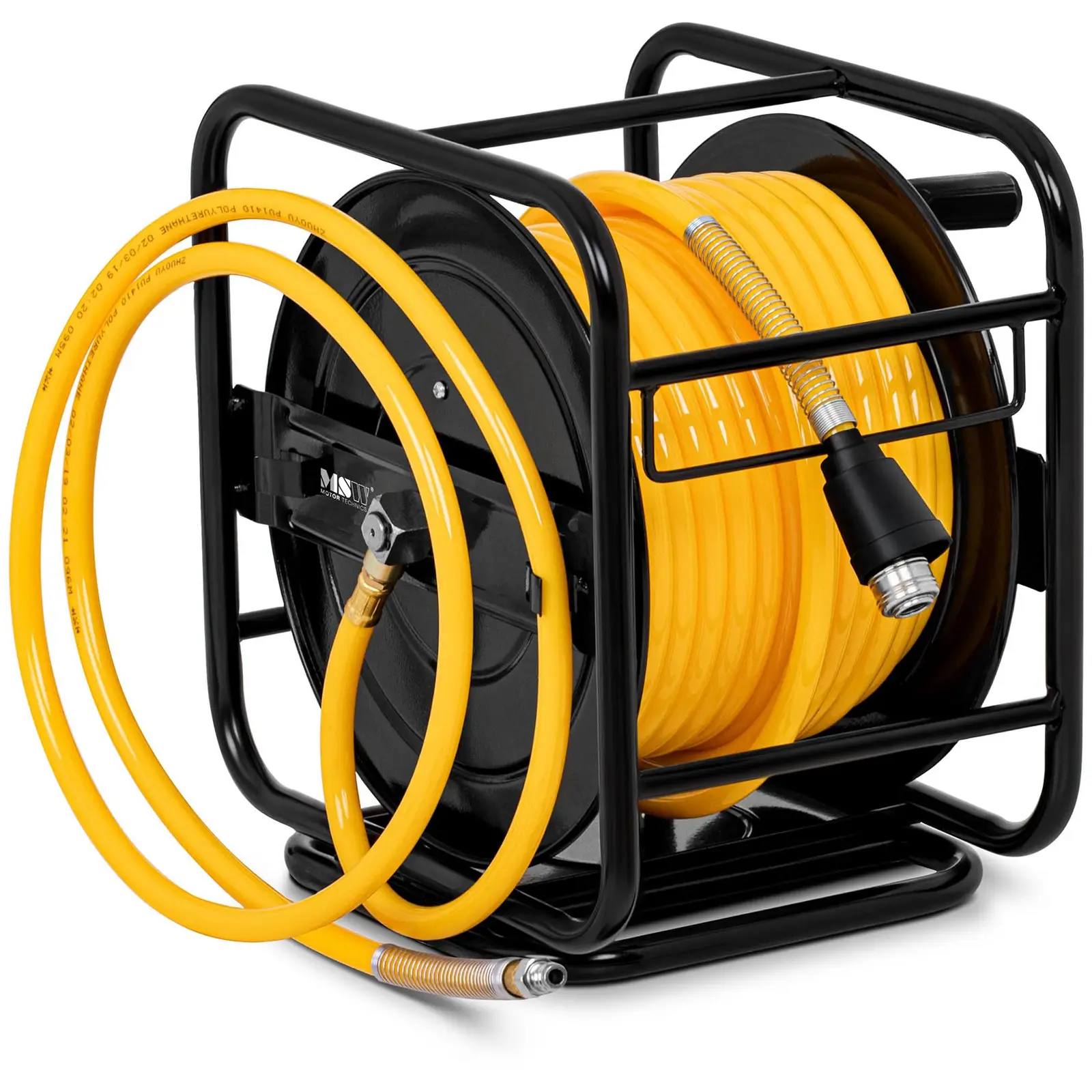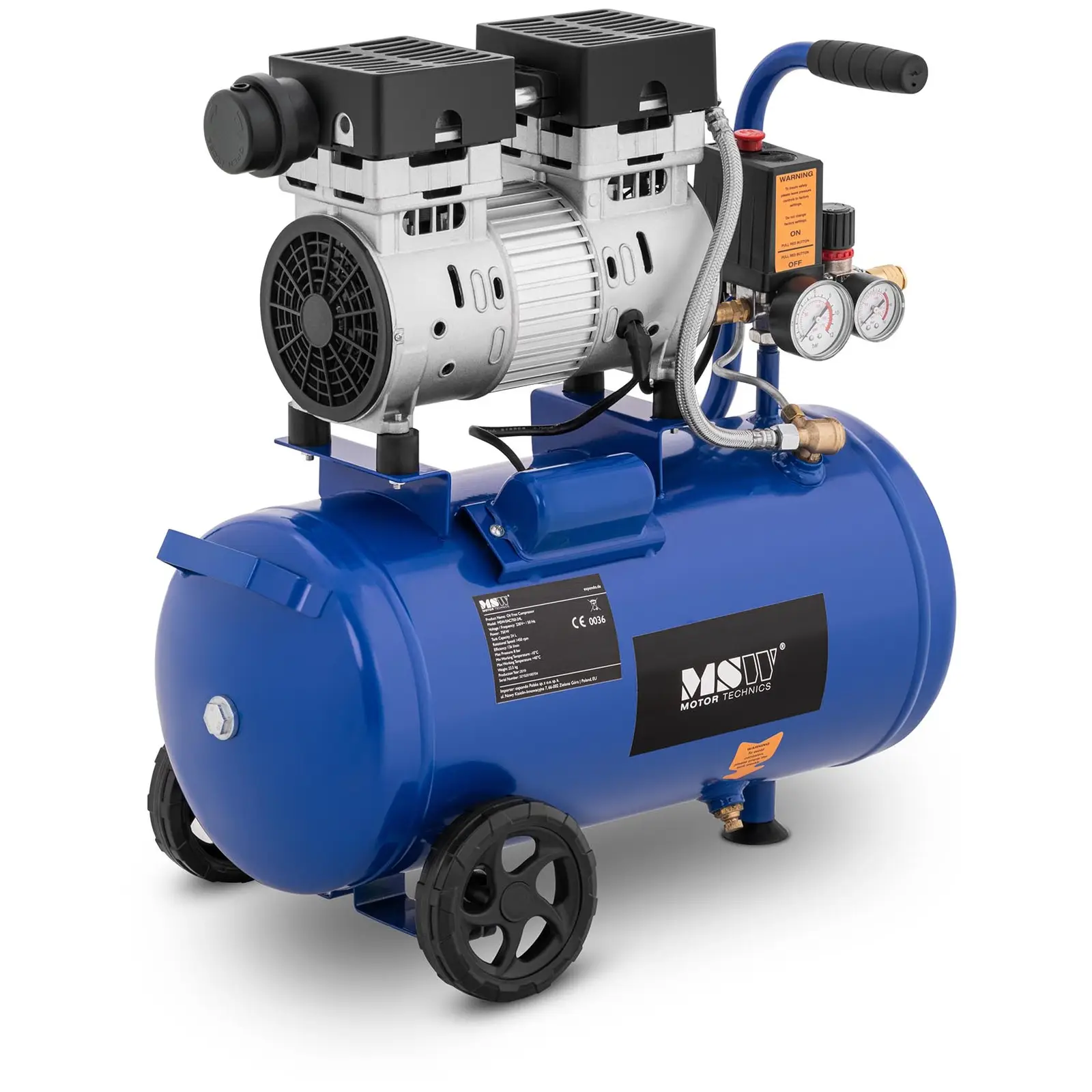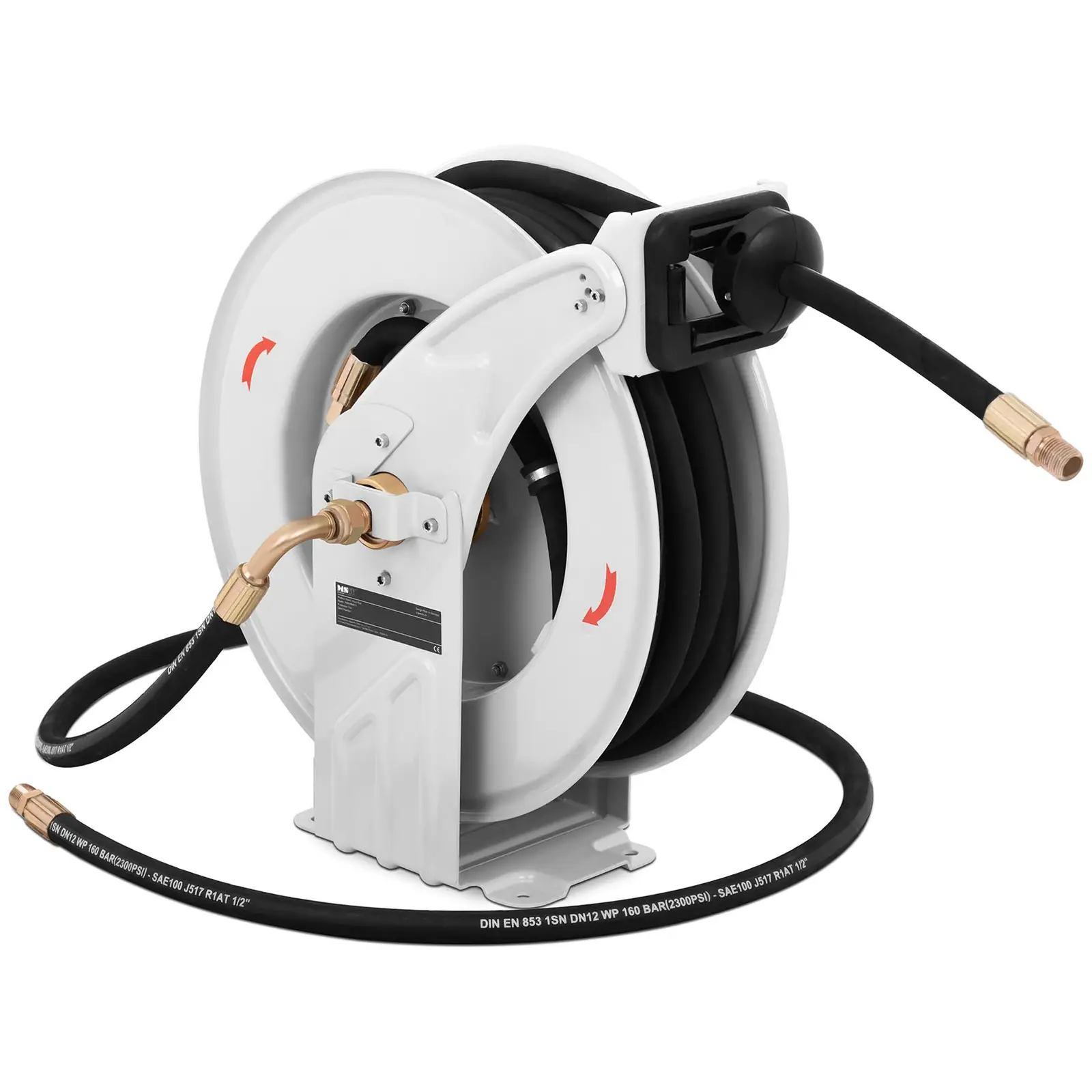Air tools need to be connected to an air compressor in order to work. So choosing the right compressor is very important, ensuring the right level of efficiency as stated in the technical specifications. So what should you pay attention to when choosing a compressor? Let's have a closer look.

Air tools need to be connected to an air compressor in order to work. So choosing the right compressor is very important, ensuring the right level of efficiency as stated in the technical specifications. So what should you pay attention to when choosing a compressor? Let’s have a closer look.
- How does an air compressor work?
- Technical specifications of air compressors
- Uses of an air compressor
- What should the capacity of a compressor for air wrenches be?
- Choosing the right compressor for your air wrench
- Which air compressor will work best with an air impact wrench for tyre services and other similar companies?
- How to choose a compressor for use with an air impact wrench – summary
How does an air compressor work?
Air compressors are simple devices. An engine sucks in air and compresses it into an air tank, which is under very high pressure. The air is then passed on to the connected tool through a rubber hose. The simplest in terms of construction are piston compressors, also called reciprocating compressors. Their construction consists of a piston and a cylinder. In this case, the air is sucked into the device, where it is moved by a crank mechanism.
The volume of air is reduced, making it possible to collect more air. For more demanding tasks, however, it may turn out that the pressure obtained in this way is insufficient. This is where other types of compressors will come in handy, such as rotary screw, diaphragm, spiral, rotating piston and rotary vane compressors.
Technical specifications of air compressors
Regardless of the type of compressor, the choice of compressor for use with an air impact wrench depends on the technical specifications. The compressed air supplied to the tool should meet relevant requirements specified in the technical specifications of the air wrench.
The first aspect to check is the working pressure, the value of which determines the minimum pressure that the compressor will provide during its operation. For example, if a reciprocating compressor has an operating pressure of 6 bar and a maximum pressure of 8 bar, it will fill the tank to the maximum level, and when the pressure drops below the operating value (i.e. 6 bar), the compressor will turn on again, pumping air to 8 bar.
When it comes to assessing which air impact wrench will match a given compressor, the compressor’s working pressure should be higher than the minimum pressure of the air wrench. If you want to make sure that the pressure of the air supplied to the tool is sufficiently stable, you can use a reduction at the compressor outlet.
Another feature is the efficiency of the compressor. This determines the amount of compressed air with appropriate pressure, delivered per unit of time. The capacity is expressed in litres per minute (l/min). If the efficiency of the compressor is too weak in relation to that required by the wrench, the wrench will not be able to work with enough force due to insufficient pressure.
The last aspect is the compressed air purity class. This is important, because each compressor, regardless of its type, slightly pollutes the air it supplies. For this reason filtration is used. In the case of an air wrench, a simple filter, filter reducer, or oil separator will do. It will be enough to get rid of any contamination.
Uses of an air compressor
In addition to powering wrenches and other air tools, compressors are also used for other jobs in workshops or car garages. The most common use of an air compressor to inflating car tyres. You can also connect a compressed air polisher to the compressor and use it to polish your car. Compressors can also be used for painting and sandblasting, of course with an appropriate gun attached.
-
Air Impact Wrench – 4,600 Nm 259.00 €
-
Air Impact Wrench – 3,800 Nm 189.00 €
-
Air Impact Wrench – 700 Nm 89.00 €
-
Air Impact Wrench – 1,800 Nm
What should the capacity of a compressor for air wrenches be?
The efficiency of the compressor, as we already know, is one of the most important technical specifications. So, which compressor should you choose for an air wrench with this aspect in mind? The choice is very easy. You simply need to check how much air the tool requires and choose a compressor with equal or higher efficiency.
Bear in mind, however, that if other devices are connected to the compressor at the same time, their air requirements should be added up. So a highly efficient model is always a good choice for professional use.
Choosing the right compressor for your air wrench
When choosing the right compressor for your air wrench, make sure they are compatible with each other. In practice, this means that the features of the compressor that influence the efficiency of the tool should be greater than or equal to the respective features of the tool. Only then will you be able to enjoy the full functionality of the tool and avoid unnecessary energy losses.
Which air compressor will work best with an air impact wrench for tyre services and other similar companies?
In professional car garages and tyre services, you will usually come across air impact wrenches with high torque, and therefore also a high air requirement. The wrench will be used intensively in such places, and often for tough jobs, so it’s worth choosing a compressor with a power of 4 HP, but as this is not the most important aspect, you should also take into account other values mentioned in the technical specification. If you are just setting up your own business, read our article on how to open a car repair shop.
As mentioned before, the efficiency of the compressor is also important, and should match the air wrench’s air requirement. So if you are looking for a compressor for professional use, choose a device with the highest possible capacity. Not only will you be able to use it with more advanced wrenches, but also other air tools at the same time.
Another thing to remember is the capacity of the tank. If you intend to use the compressor for long periods of time, without breaks, then choose a model with the highest possible capacity. The more air a compressor can hold at one time, the less often you will need to fill it up. You will also be able to use it longer and more effectively. An example are car paint shops, where a constant air supply is absolutely necessary. Compressors with a capacity of at least 300 litres will be perfect in this case.
Moving away from the topic for a moment, bear in mind that the noise generated by the compressor can be a disadvantage. It can be very annoying in the long run, and what’s more, the noise can also make it difficult to hear what your colleagues or customers are saying, so if possible try to place the compressor in another room and lead the cables run under the flooring.
How to choose a compressor for use with an air impact wrench – summary
Using an air impact wrench can make your work much easier and more efficient. Such tools are very popular in the automotive industry, with particular emphasis on tyre services. However, in order for an air impact wrench to fulfill its role, it should be connected to a compressor supplying it with compressed air.
Which compressor you should use with an air impact wrench depends on the technical specifications of both devices. The technical specifications of the air wrench and compressor should be compatible, in order to ensure effective work and avoid energy losses. In the case of professional car repair shops, such situations would be unacceptable. Other aspects to pay attention to are the air capacity and the working pressure – the higher the better.
The capacity is also important for continuous work. The larger it is, the less often you will need to fill it with air. Compressors are used not only with air tools, such as air impact wrenches, but also inflating car tyres, painting, poilishing car paintwork, as well as sandblasting. So if you also plan to carry out such jobs, take into account the need to connect various other tools to the compressor, after checking their requirements in this regard.










Share